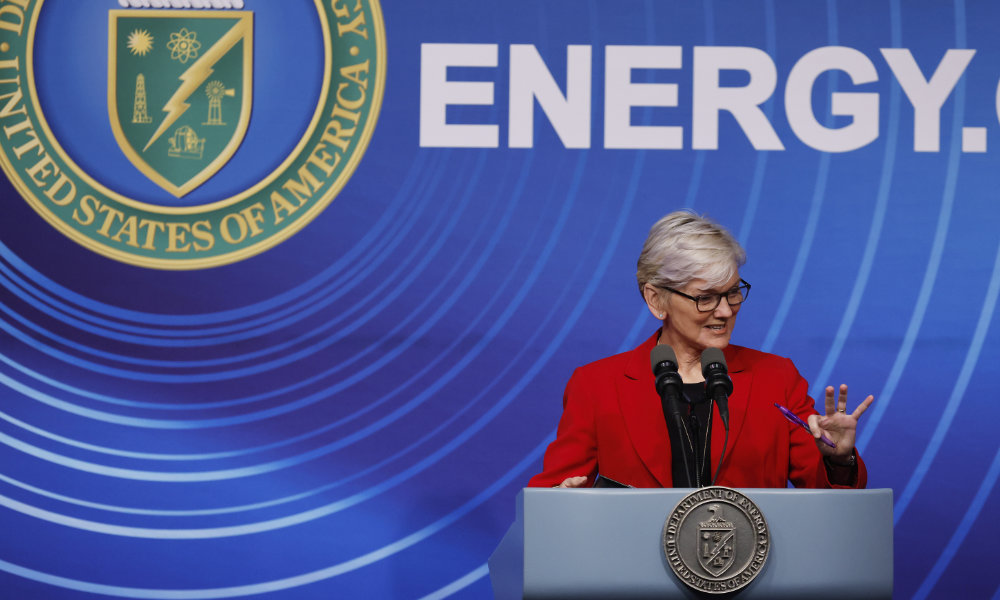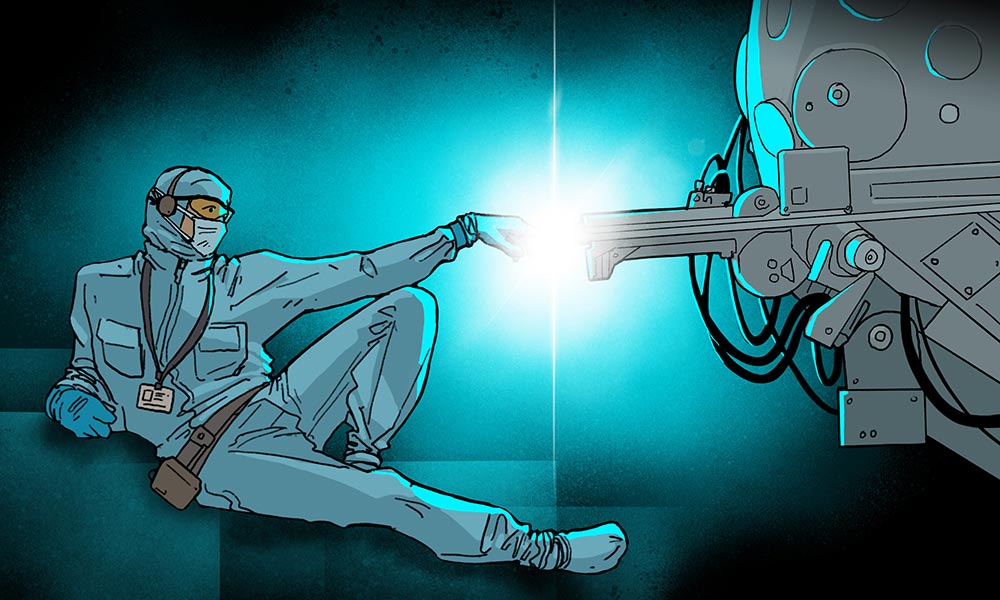The US Department of Energy program partners private companies with national laboratories and universities to design the first commercial fusion power plant.
The University of Rochester’s Laboratory for Laser Energetics (LLE) is integral to a new groundbreaking project in the field of laser-driven inertial confinement fusion (ICF) as part of a team collaborating with Xcimer Energy Inc., a private company dedicated to developing abundant and carbon-free fusion energy.
The US Department of Energy (DOE) recently announced Xcimer’s selection for a $9 million award through the DOE’s Milestone-Based Fusion Development Program. This program, which awarded funding to seven other companies across the country, aims to propel the United States toward achieving the first fusion power plant, which will help bring fusion to technical and commercial viability. Xcimer was one of only two laser inertial fusion companies selected for this highly competitive program.
Under the program, LLE will provide Xcimer with expertise in ICF implosion physics and design, as well as expertise on tritium, a key fuel involved in the fusion process.
LLE has a long history in ICF research and laser-driven implosion techniques, on which a large community of researchers has closely collaborated, to support the viability of the nation’s nuclear weapons stockpile and pave the way for fusion as an abundant supply of clean energy. As the largest DOE university-based program in the nation and home to the OMEGA laser, LLE educates and trains scientists on ICF and high-energy-density science research.
“LLE has a storied history and exciting future of advancing inertial confinement fusion target design and required technologies such as lasers, diagnostics, and tritium,” says LLE Director Chris Deeney. “We are excited to work with Xcimer on novel targets and tritium systems, which can help advance fusion energy, as well as support student education and our National Nuclear Security Administration (NNSA) mission.”
The $46 million Milestone-Based Fusion Development Program, authorized in the Energy Act of 2020, was announced last September. The program is designed for private companies that are working with national laboratories, universities, and other entities to expedite the technical and commercial milestones to design a fusion power plant. The program supports the White House Bold Decadal Vision for commercial fusion energy in the United States.
“Our ultimate goal is for the strongest solutions to rise to the top and to help us chart a clear path forward to bring clean fusion energy to American homes and business,” said US Secretary of Energy Jennifer Granholm during the livestream of the funding announcement.
An ideal energy source
Fusion has long been viewed as an ideal energy source due to its potential to be a safe, clean, cheap, and reliable energy technology. Fusion energy replicates the same reaction that powers the stars, including the sun, and is produced by combining atoms to create heavier ones.
Since the early 1970s, scientists have pursued the possibility of using high-power lasers to compress thermonuclear material long enough, at high enough temperatures to trigger ignition, meaning the resultant output of fusion energy is greater than the energy delivered to the target. The entire process of compression and ignition, which occurs in nanoseconds, is called inertial confinement fusion.
Scientists achieved ignition in December 2022 at the National Ignition Facility at Lawrence Livermore National Laboratory. Xcimer will leverage this achievement and the significant progress made by the laser fusion community to advance ICF and dramatically reduce laser costs, leading to simplifications in the design of a laser fusion power plant.
To reach its ambitious goals, the California-based Xcimer has assembled a team of experts from US national laboratories, academic institutions, and private industry, including the LLE. The team will focus on driving advancements in laser-driven ICF and overcoming major engineering challenges essential for the construction of a fusion pilot plant by the 2030s.
“LLE will play an integral role in our team as we work together to address critical science and engineering issues to enable a pilot plant based on laser-driven inertial fusion,” says Conner Galloway, cofounder and CEO of Xcimer Energy. “We’re grateful for the opportunity the DOE Milestone Program provides to leverage LLE’s decades of experience in designing and fielding inertial fusion target experiments and tritium handling systems, to further our goal of making commercial fusion energy a reality.”
The team involved in Xcimer’s work also includes partners and collaborators at the Naval Research Laboratory, Lawrence Livermore National Laboratory, Los Alamos National Laboratory, General Atomics, Westinghouse Electric Company, Oak Ridge National Laboratory, Savannah River National Laboratory, and the Massachusetts Institute of Technology.
About the University’s Laser Lab
LLE was established at the University in 1970 and is the largest US Department of Energy university-based research program in the nation supported by the National Nuclear Security Administration as an integral part of its Stockpile Stewardship Program. The LLE also receives annual support from the State of New York’s State Energy Research and Development Authority (NYSERDA).
As a center for the investigation of the interaction of intense radiation with matter, LLE is a unique national resource for research and education in science and technology. Current research includes exploring fusion as a future source of energy, developing new laser and materials technologies, and better understanding high-energy-density phenomena. In addition to its vital roles in various areas of scientific research and its support of the local high-tech economy, LLE plays an important role in educating the next generation of scientists and engineers.
As the DOE National Laser Users’ Facility (NLUF), LLE hosts scientists and students from across the nation and around the world to carry out fundamental research, training, and education. Additional facility access for qualified external researchers is made possible through LLE’s participation in LaserNetUS.
Read more
 Scientists hit key milestone in fusion energy quest
Scientists hit key milestone in fusion energy quest
The major breakthrough of achieving ignition was cause for celebration at Rochester’s Laboratory for Laser Energetics as well.
 What is fusion, and why is it so difficult to create?
What is fusion, and why is it so difficult to create?
Fusion is the energy of nature, powering the stars and making it possible for life to exist on Earth. Why, then, has achieving fusion power eluded researchers for decades?
 Laboratory for Laser Energetics represented at White House summit on fusion energy
Laboratory for Laser Energetics represented at White House summit on fusion energy
Former LLE Director Michael Campbell joined national stakeholders to discuss the development and commercialization of fusion as a safe, clean, reliable energy source.





